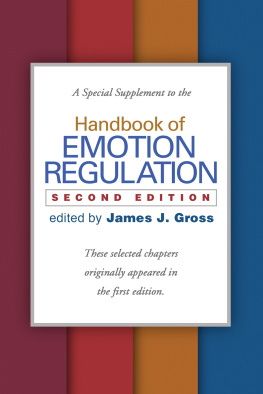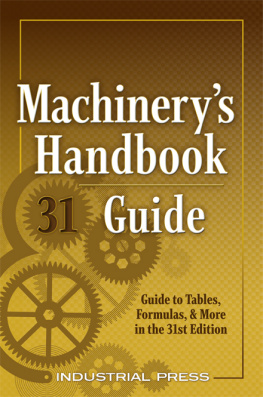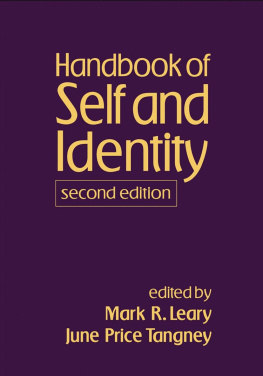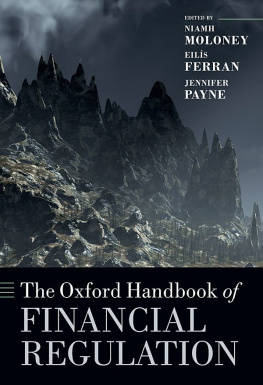Contributors
John A. Bargh, PhD, Department of Psychology, Yale University, New Haven, Connecticut
Roy F. Baumeister, PhD, Department of Psychology, Florida State University, Tallahassee, Florida
Susan D. Calkins, PhD, Department of Psychology, University of North Carolina, Greensboro, North Carolina
William A. Cunningham, PhD, Department of Psychology, The Ohio State University, Columbus, Ohio
Emily R. Grekin, PhD, Department of Psychological Sciences, University of MissouriColumbia, Columbia, Missouri
Ashley Hill, PhD, Center for Developmental Science, University of North Carolina, Chapel Hill, North Carolina
Stephen P. Hinshaw, PhD, Department of Psychology, University of California at Berkeley, Berkeley, California
Benjamin C. Mullin, BA, Department of Psychology, University of California at Berkeley, Berkeley, California
Kenneth J. Sher, PhD, Department of Psychology, University of MissouriColumbia, Columbia, Missouri
Dianne M. Tice, PhD, Department of Psychology, Florida State University, Tallahassee, Florida
Lawrence E. Williams, MS, Department of Psychology, Yale University, New Haven, Connecticut
Philip David Zelazo, PhD, Department of Psychology, University of Toronto, Toronto, Canada
Anne L. Zell, MA, Department of Psychology, Florida State University, Tallahassee, Florida
MECHANISMS UNDERLYING EMOTION REGULATION
PHILIP DAVID ZELAZO
WILLIAM A. CUNNINGHAM
Research on executive function (EF) is directed at understanding the conscious control of thought and action. Although EF can be understood as a domain-general construct at the most abstract functional level of analysis (i.e., as conscious goal-directed problem solving), more precise characterizations distinguish between the relatively hot motivationally significant aspects of EF and the more disinterested cool aspects (Zelazo & Mller, 2002). In this chapter, we propose a model of emotion regulation based on principles of EF (both hot and cool) that spans Marrs (1982) three levels of analysiscomputational (concerning what EF accomplishes), algorithmic (dealing in more detail with the way information is represented and how it is processed), and implementational (examining how the information processing is realized in the brain). This model highlights the roles of reflection (levels of consciousness) and rule use in the regulation of emotion and makes initial steps toward explaining how these processes contribute to the subjective experience of complex emotions. Presentation of this model is intended to serve as a concise summary of research on EF and as an exploration of its implications for emotion regulation.
DEFINING EMOTION AND EMOTION REGULATION
In agreement with a growing number of researchers (e.g., Barrett, Ochsner, & Gross, in press; Damasio, 1994), we suggest that a stark distinction between cognition and emotion reflects an outmoded adherence to a fundamentally moralistic world view (reason is angelic, passion beastly). Instead, we suggest that emotion corresponds to an aspect of cognitionits motivational aspect. On this view, it is possible to have cognition that is more or less emotional, more or less motivated. Thus, we use the term emotion to refer to an aspect of human information processing that manifests itself in multiple dimensions: subjective experience, observable behavior, and physiological activity, among them. Emotion regulation refers to the modulation of motivated cognition and its many manifestations. Emotion regulation can occur in a variety of ways (Gross & Thompson, this volume), but one of the most obvious varieties is the deliberate self-regulation of emotion via conscious cognitive processing, and it is this variety of emotion regulation that we address in terms of EF. It is important to note that although we focus on the aspects of emotion regulation that are directly associated with processes of EF, we are not suggesting that this is the only route to emotion regulation (cf. Fitzsimons & Bargh, 2004). As with any complex psychological phenomenon, emotion regulation may well occur in a variety of ways (some of which may be quite automatic).
EXECUTIVE FUNCTION
EF is generally recognized as an important but ill-understood umbrella term for a diverse set of higher cognitive processes, including (but not limited to) planning, working memory, set shifting, error detection and correction, and the inhibitory control of prepotent responses (e.g., Roberts, Robbins, & Weiskrantz, 1998; Stuss & Benson, 1986; Tranel, Anderson, & Benton, 1994). These processes are recruited for the deliberate self-regulation of emotion, and in this chapter, we will attempt to explain how. First, however, we need to provide a characterization of EF. In what follows, we describe EF at each of Marrs (1982) three levels of analysiscomputational (concerning what EF accomplishes), algorithmic (dealing in more detail with the way information is represented and how it is processed), and implementational (examining how the information processing is realized in the brain)and then show in more detail how EF plays a role in emotion regulation. A new model is outlined that relies on a distinction between hot and cool EF (see below), both of which are hypothesized to be involved in emotion regulation. This model highlights what we take to be the most important aspects of EF to be considered when seeking to understand emotion regulation.
Computational Level
One way to capture the diversity of the processes associated with EF without simply listing them and without hypostasizing homuncular abilities (e.g., a Central Executive [Baddeley, 1996], or a Supervisory Attentional System [Norman & Shallice, 1986]) is to treat EF as a complex hierarchical function (Zelazo, Carter, Reznick, & Frye, 1997). In this view, which has its origins in the work of Luria (e.g., 1966) and Goldberg (e.g., Goldberg & Bilder, 1987), the function of EF is seen to be deliberate, goal-directed problem solving and functionally distinct phases of problem solving can then be flexibly and dynamically organized around this function. illustrates how different aspects of EF contribute to the eventual outcome, as well as how EF unfolds as an iterative, essentially cybernetic (Weiner, 1948), process. Although this functional characterization does not, by itself, provide an adequate explanation of EF, it provides a framework within which one can understand the hierarchical structure of EF and consider the way in which more basic cognitive processes (e.g., working memory) contribute to particular aspects of EF (e.g., the role of working memory in intending).






